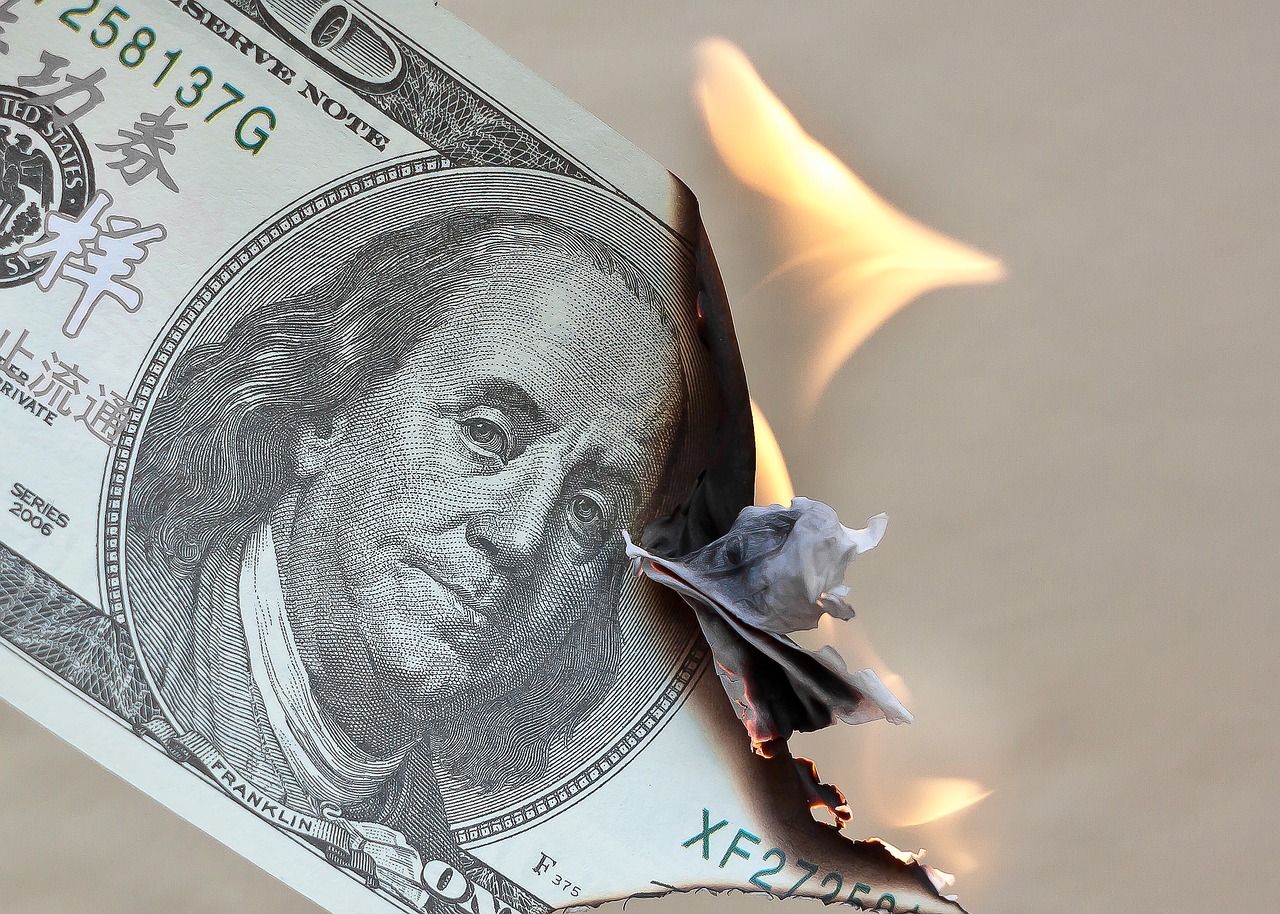When I visited France to meet with my girlfriend, she knew that I was a Bitcoin writer but she never understood exactly what it was. I told her that I may be fiat poor but BTC rich and she said, “But that’s not even real money.”
That left me thinking what ‘real money’ is and how to explain the differences between a manipulated fiat system and the immutable blockchain of Bitcoin. If you’re a newbie to this world of Bitcoin, I’m here to guide you through the learning curve. First, let’s discuss a bit of history when it comes to fiat money…
Fiat Money No Longer Backed By Gold

For money to have value, it needs to be backed by something other than speculation. For centuries, paper currency was backed by gold, meaning it could be redeemed for that valuable commodity. However, after the Nixon administration declared the U.S dollar to no longer be backed by this currency, the fiat fraud began.
President Richard Nixon closed the gold window in 1971 and since then, inflation has skyrocketed. This is because without the need for a tangible and rare commodity like gold to be required in the country’s treasury, the U.S government can conspire with the central bank to create as much money as they need.
Taxes are one way of raising funds from citizens along with the selling of bonds. But taxes can only be raised so far before a revolution begins. Just ask the French before their historic revolution. Bonds are also not the best investment if inflation is higher than their yields. If a bond yields 5% for example and the inflation rate was 7%, you’d be losing 2% of the value of your wealth over time. This dried up another income source for most governments. Thus, printing of money became their solution (and economically damaging addiction).

Inflation occurs when there is more circulating supply of currency without an increase of production of goods and services. Sure, your crisp $100 bill might still numerically be the same but the value is declined when there is too much available. This is the economic law of supply vs demand and it applies to currency as well.
Imagine that you labor for $100 per hour but over the next few weeks $100 bills became easy to acquire. They would appear in your mailbox by the thousands through stimulus checks every week, and even begin flooding the streets. You could pick up a $100 bill every 5 minutes with the abundance of currency creation.
Now, in this illustrative scenario would you sacrifice 1-hour of your time for a bill that can be found in 5 minutes?
Likely not. You’d decide it would only make sense if you increased the cost of your service significantly. Merchants would be in a similar situation and increase the costs of their products. This leads to inflation and for those that aren’t able to raise their services due to a decline in demand, it spells doom for their personal finances. They fail to acquire/convince the market that their service or goods is worth an increase but the cost of living has increased leaving them living paycheque to paycheque and eventually poverty.
This may seem like an extreme example but hyperinflation has occurred many times throughout history. So, while fiat currency may legally be deemed ‘Money’ by the state, the legitimacy of it as a store of value is evaporated by poor money management by centralized entities.
Many BTC newbies see government money as a secure asset, but it’s really not backed by anything but a belief system. One that becomes more and more fragile as time goes on…
“Fiat currency always eventually returns to its intrinsic value: zero.” – Voltaire
How Bitcoin Is Digital, But Real Money
Bitcoin, on the other hand, operates on a decentralized network of computers that run complex algorithms to verify and record transactions. This peer-to-peer electronic cash system is not controlled by any central authority or government, making it immune to manipulation. It has a finite supply of 21 million bitcoins that can ever exist, with each one being divisible into 100 million units called satoshis. These properties make Bitcoin more akin to physical gold rather than traditional fiat money.
In The Bitcoin Standard, economist Saifedean Ammous argues that Bitcoin is “hard money” in comparison to fiat currency, which he deems as “soft money”. Hard money refers to a currency that has scarcity and cannot be easily inflated or manipulated by any central authority. This makes it more reliable as a store of value over time.
Bitcoin’s utility as a form of digital but real money has been proven through its widespread adoption and use cases. It can be used for online purchases, international remittances, peer-to-peer transactions, and even as an investment vehicle. As more people recognize the benefits of using Bitcoin as opposed to traditional fiat currencies, its value continues to rise because the demand for it increases while the supply remains limited.
Bitcoin also requires energy to mine and operate, making it a scarce and valuable resource. This energy requirement further cements its status as a real asset with intrinsic value, similar to physical gold. Essentially Bitcoin is backed by the universe’s finite energy. This differs from fiat as it is backed only by central bank propaganda.
A Better Form of Money, Even Better Than Gold
Now that we have established that Bitcoin is a form of digital but real money, let’s explore why it may be even better than gold. Gold has long been considered the ultimate store of value and medium of exchange due to its scarcity and durability. However, there are limitations to using gold as a currency and as the future becomes clearer, it may not be as scarce as we once thought.
With Elon Musk and other entrepreneurs venturing deep into space for mining, the supply of gold could potentially increase over time. Furthermore, with innovations in technology and chemistry, it may become possible to artificially create gold in laboratories. Yes, this may seem like a sci-fi alchemy script, but it is not entirely impossible.
Discovering a goldmine or creating gold in a lab could significantly impact the precious metal’s value, making it less scarce and therefore, not as reliable as a store of value. On the other hand, as stated above, Bitcoin has a finite supply of 21 million coins that can ever exist. This scarcity is coded into its blockchain technology and cannot be manipulated by anyone.
There are other properties of Bitcoin that make it a better form of money than gold. For one, it is more divisible than gold, with each Bitcoin being divisible into 100 million units called satoshis. This makes it easier to use for everyday transactions and allows for microtransactions that may not be practical with physical gold.
Bitcoin is also more portable and easier to store than gold. With digital wallets (cold wallets and hot wallets), it can be carried around on a smartphone or computer, making it accessible from anywhere in the world. In contrast, storing and transporting physical gold can be costly and risky.
These are just a few reasons why Bitcoin not only is ‘Real Money’ but also has the potential to become a dominant, global form of currency in the future. There are already many stores around the world where you can pay for everyday goods with Bitcoin (check out our article about BTCmap.org here).
Final Thoughts on Fiat Money vs. Bitcoin
In an age where propaganda is abundant, whether it be through state sponsored news or social media, it is crucial to think critically and do our own research. The debate between gold and Bitcoin as forms of money will continue, but it is essential to consider the corrosive nature of fiat currency and why a solution like Bitcoin is being sought after.
For people like you that are new to Bitcoin, it may seem like a fake internet fad, but the truth is that it is a revolutionary technology with the potential to transform our current financial system. We were all Bitcoin newbies once before but by learning the BTC basics and understanding its principles, we can all become advocates for a more transparent, decentralized, and secure future.
Stay curious, ask questions, and continue to educate yourself on this evolving topic as we continue to publish more content on Bitcoin!


1 thought on “Bitcoin For Newbies: Fiat Manipulation Explained”
Comments are closed.